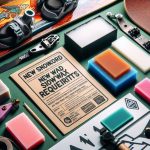Imagine this: you’re cruising through a winter wonderland on your trusty snowmobile, the crisp air invigorating your senses and the majestic scenery captivating your eyes. But just as you reach the peak of your adventure, your snowmobile abruptly stops in its tracks. And the culprit? A dead battery.
Unfortunately, this is a common predicament experienced by many snowmobilers. With frigid temperatures and treacherous terrain, it’s no surprise that snowmobile batteries often give out at the most inconvenient moments. From excessive use to inadequate care, there are various factors that contribute to these frustrating occurrences.
- Corrosion: Corrosion on the battery terminals and connections can reduce the battery’s lifespan and prevent it from starting. To clean corrosion, you can use a terminal brush or wash with a solution of one tablespoon of baking soda and one cup of water. Rinse well with tap water and dry with clean shop towels.
- Cold: Car batteries can weaken from too much cold, which can cause them to die.
- Fuel quality: Fuel can degrade in quality when it sits around during the off-season.
- Fouled spark plug: Spark plugs can sometimes get plugged up and need to be changed.
In this blog post, we’ll delve into the root causes of dead snowmobile batteries and provide practical tips for preventing them. So bundle up (or should we say buckle up?) and get ready to conquer the trails without any battery-related setbacks.
Why does My Snowmobile Battery Keep Dying?
Contents
When it comes to snowmobile batteries, there are various reasons that can lead to their death. These factors can range from external conditions to internal problems. However, there are some common causes for a snowmobile battery dying and ways to prevent it from happening.
- Chilly Temperatures: Extreme cold weather can have a significant impact on the performance of your snowmobile battery. The low temperatures make it more challenging for the battery to generate the necessary energy for starting the engine, resulting in a drained or dead battery. To avoid this issue, it is essential to store your snowmobile in a temperature-controlled area and use a maintenance charger regularly.
- Corrosion: Dirt, grime, and moisture can accumulate on the battery terminals, leading to corrosion. This can disrupt the flow of energy and shorten the battery’s lifespan. It is crucial to regularly clean the battery terminals with a specialized cleaner and keep them dry.
- Improper Storage: Leaving your snowmobile with the battery still attached can gradually drain its charge over time. It is best to remove the battery and store it in a cool, dry place away from direct sunlight.
- Neglecting Maintenance: Regular maintenance is vital for snowmobile batteries to ensure their optimal performance. This includes periodic cleaning, charging, and using a trickle or smart charger when not in use.
- Aging Battery: Like any other battery, snowmobile batteries also have a limited lifespan and will eventually need replacement. If your battery is more than three years old or shows signs of weak performance, it may be time to consider replacing it.
How Long Should a Snowmobile Battery Last?
The lifespan of a snowmobile battery can range from 3 to 5 years, provided it is maintained correctly. However, several factors can affect its longevity, including usage, storage, and maintenance.
Factors That Impact the Lifespan of a Snowmobile Battery:
- Usage – The frequency at which you use your snowmobile can have a significant impact on the battery’s lifespan. If you ride your snowmobile frequently, the battery may have a shorter lifespan compared to one that is used less often.
- Storage – To prolong the life of your snowmobile battery, it is best to store it in a temperature-controlled environment. Extreme temperatures, whether hot or cold, can drain the battery and cause damage over time.
- Maintenance – Regularly maintaining your snowmobile battery is critical for its longevity. This includes cleaning the terminals, checking fluid levels, and ensuring proper charging during the off-season.
Signs That Your Snowmobile Battery Needs to be Replaced:
- Weak Performance – If you notice that your snowmobile is struggling to start or experiencing other performance issues, it may be time to replace the battery.
- Corrosion and Damage – Check for any visible signs of corrosion or damage on the battery terminals. If left unchecked, this can lead to further damage and decrease the battery’s lifespan.
- Age – As mentioned earlier, batteries have a limited lifespan and should be replaced after 3-5 years or when signs of deterioration are present.
| Factors | Description |
| Usage | The frequency at which the snowmobile is ridden. |
| Storage | The type of environment in which the snowmobile is stored. |
| Maintenance | The regularity of maintenance performed on the battery. |
| Signs of Replacement | Indications that the snowmobile battery may need to be replaced. |
How to Know If My Snowmobile Needs Battery Replacement?
There are numerous methods that can be used to determine if your snowmobile requires a new battery. These techniques involve testing the battery’s voltage, charge, and resistance utilizing a variety of tools such as a voltmeter, voltage tester, multimeter, and load tester.
Additionally, there are several warning signs to keep an eye out for that may indicate your snowmobile battery needs replacement. It is essential to regularly inspect and maintain your battery while taking proactive measures to ensure optimal performance.
| Method | Description | Benefits |
| Voltmeter Test | Attach a voltmeter to the battery terminals and record the reading. | A quick and effortless way to determine if the battery is depleted. |
| Voltage Tester | Place the voltage tester on both terminals of the battery to check for a satisfactory charge. | Provides a more precise reading of the battery’s charge level. |
| Multimeter Test | Charge the battery first, then utilize a multimeter to examine the voltage and resistance. | Allows for a more detailed analysis of the battery’s performance. |
| Load Tester | Simulates starting the engine to test if the battery has enough volts. | Gives a more realistic assessment of the battery’s functionality under load. |
In addition to these testing methods, there are also some indications that may suggest your snowmobile battery needs replacement. These include sluggish cranking, dimming headlights, difficulty starting, and a distinct sulfurous odor emanating from the battery. If you observe any of these signs, it is crucial to address them promptly to avoid being stranded in the cold.
To prevent your snowmobile battery from needing replacement, it is vital to regularly maintain and charge it. Proper storage and use of a maintenance charger during off-seasons can also help extend the battery’s lifespan.
It is recommended to routinely check for any signs of corrosion or other issues within the battery and address them immediately.
How to Maintain and Charge Snowmobile Batteries?
Maintaining and charging snowmobile batteries is crucial for optimal performance and preventing unexpected battery failures. Regular charging, ideally after each use or at least once a month during the off-season, is recommended. However, the frequency may vary depending on usage and environmental factors like temperature and humidity.
Proper maintenance is also essential for keeping snowmobile batteries in top condition. This includes regular cleaning to remove any corrosion or buildup on the terminals, as well as using a maintenance charger to keep the battery charged when not in use. It’s also important to check the battery’s water levels regularly and top them up if needed.
When not in use, it’s best to store snowmobile batteries in a cool, dry place. Extreme temperatures can significantly impact the lifespan and performance of the battery. During extended storage periods, disconnecting the battery from the snowmobile and storing it in a safe place is recommended.
Conducting routine checks and inspections before each ride can help identify potential issues with the battery. This involves checking for damage or leaks, ensuring proper connections, and using a multimeter to test voltage if necessary.
Also Read: How Far Can A Snowmobile Go On A Tank Of Gas?
Conclusion
In conclusion, a dead snowmobile battery can quickly put a halt to your winter fun and leave you stranded in the cold.
But fear not, as there are ways to prevent this frustrating occurrence. From harsh weather conditions to neglecting regular maintenance, there are various factors that can contribute to a dead battery.
However, by being aware of these root causes and taking proactive measures such as proper storage, regular charging, and maintenance, you can ensure your snowmobile battery stays alive and kicking.
Don’t forget to regularly inspect for signs of corrosion or damage and address them promptly to avoid any unexpected breakdowns.
By following these tips and techniques, you can guarantee that your snowmobile battery will last its intended lifespan and provide reliable performance on every ride.






